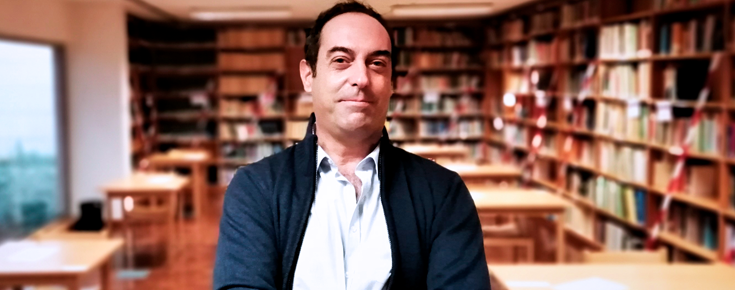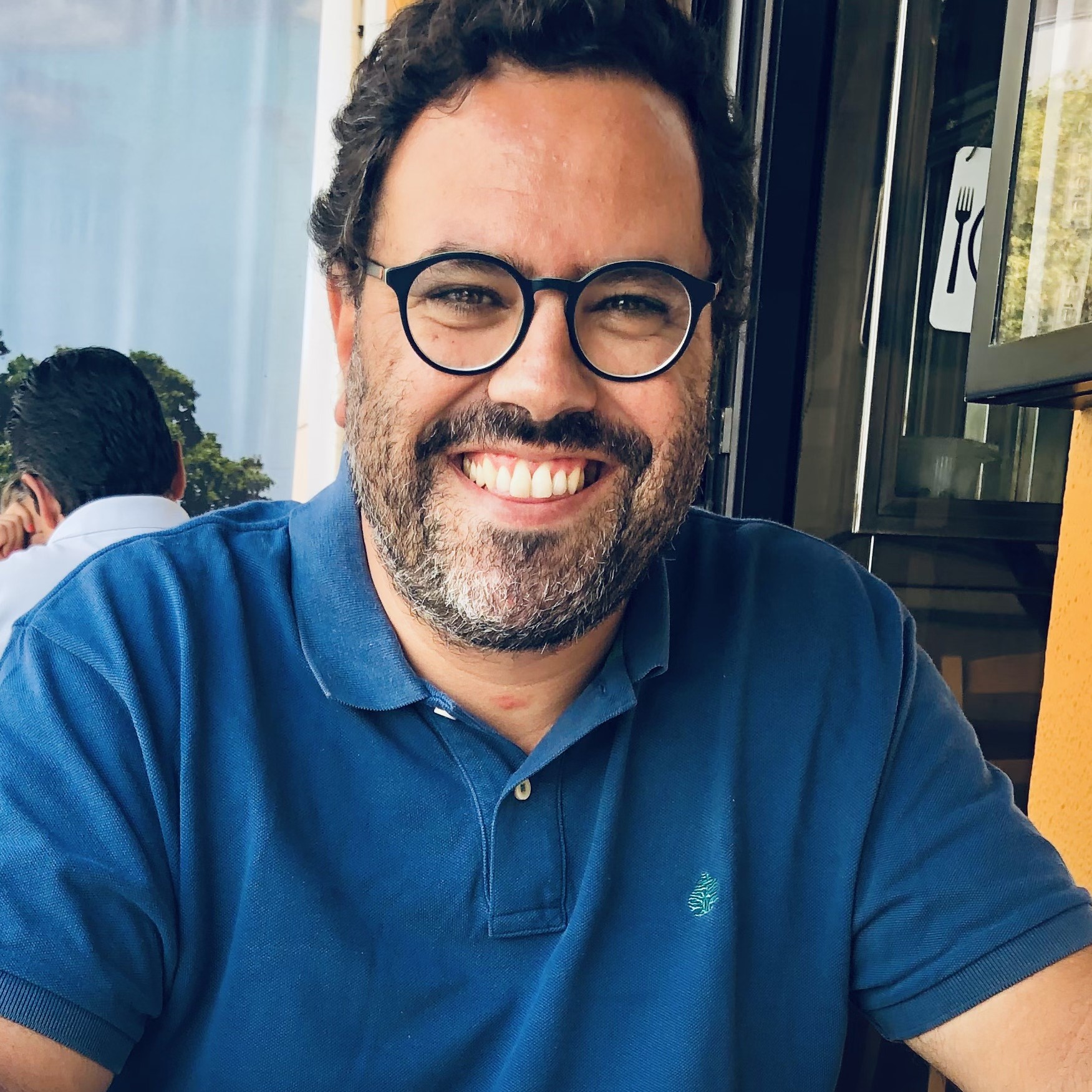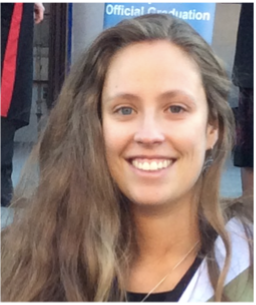
May 14th, 9h30 - FCUL, Room 6.2.56
The aim of this event is to illustrate the importance of interdisciplinarity. To do so we bring together researchers from different areas who work in interdisciplinary fields. Finally, the event aims also to boost new collaborations.
This event is the third of a series. The first two were entitled “Pontes entre biologia, estatística, informática e matemática”. Due to the success of these events we decided to extend to all the scientific areas of our faculty.
The official language of the meeting is English.
Target audience: Third year undergraduate, Master and PhD students and all the researchers of CIÊNCIAS interested in interdisciplinarity.
Poster Session: If you have an interdisciplinary original work and want to submit a poster you should register until: May 9th. There will be a commission which will select the best poster.
Registration is free but mandatory. Deadline for registration: May 9th
| 9h30-9h45 | Welcome |
| 9h45-10h15 | Visual Exploration of Big Data in Astronomy and Beyond, André Moitinho (LIP) |
| 10h15-10h45 | When neighbours play a role: a systems-level analysis of protein interactions conditioning cancer driver mutation effects, Francisco Pinto (BIOISI) |
| 10h45-11h15 | How does ecological stability affect evolution?, Jessica King (CE3C) |
| 11h15-11h45 | Posters & Coffee Break |
| 11h45-12h15 | Understanding record-shattering climate extremes from a statistical perspective, Luis Gimeno-Sotelo (CEAUL) |
| 12h15-12h45 | Exploration of Geological Resources whose Access is Increasingly Challenging, Mário Gonçalves (IDL) |
| 12h45-13h15 | Patient-centric machine learning: A step toward precision medicine in neurodegenerative diseases, Diogo Soares (LASIGE) |
| 13h15-14h30 | Lunch Break |
| 14h30-15h30 | KEYNOTE SPEAKER: Collective Behavior and Intelligence from simple interacting units, Gonzalo G. de Polavieja (Champalimaud) |
| 15h30-16h | Panel Discussion |
| 16h-16h30 | Posters & Coffee Break |
| 16h30 | Closing |
 |
Gonzalo G. de Polavieja Champalimaud Research |
|
|
Collective Behavior and Intelligence from simple interacting units
I will describe how we have approached the study of collective animal behavior using mathematical modelling and Machine Learning. In turn, the study of animal behavior has inspired us to think of new approaches in Machine learning in which you have a collective of simple interacting mathematical objects. Bio: Gonzalo G. de Polavieja did a D.Phil. in Physical Sciences as 'Marie Curie' fellow (Oxford, UK) working in quantum geometric phases, a postdoc in Neurobiology as 'Welcome Trust' fellow in Mathematical Biology at the Laughlin Lab (Cambridge, UK). He was then Junior PI as 'Ramon y Cajal' fellow (Theoretical Physics, UAM), tenured at Cajal Institute (CSIC, Spain). In 2014 he moved to the Champalimaud Foundation in Lisbon as Group Leader of the Collective Behavior Laboratory (now named Mathematics of Behavior and Intelligence). His research aim is to reach a quantitative understanding of collective behavior, including collective coordination, collective decisions and collective intelligence. His group's approach to this problem is by using a variety of techniques, including behavior, mathematical modelling, Machine Learning, virtual reality and neurobiology. As the lab extensively uses and develops AI techniques, a research line in the lab also consists in new mathematical approaches in AI based in the collective behavior of some mathematical objects. |
||
 |
André Moitinho LIP, FCUL |
|
|
Visual Exploration of Big Data in Astronomy and Beyond
In recent years, astronomical surveys have generated data on an unprecedented scale. For instance, the European Space Agency's Gaia mission is in the process of creating a dynamic, three-dimensional map of the Milky Way, resulting in an archive that exceeds one petabyte. Projects, such as the EUCLID mission and the LSST survey, are expected to increase these volumes into the tens of petabytes, posing significant challenges to established data analysis techniques. While data mining and machine learning have advanced considerably, data visualisation remains an essential component in the construction of scientific knowledge. Visual exploration can reveal patterns and insights that traditional statistical methods may overlook, often serving as the initial guiding for scientific investigation. However, dealing with such vast datasets introduces several challenges. First, the sheer size of the archives means that much of the data is stored on remote servers. Second, interactive exploration demands that the tools remain responsive even when interfacing with extensive databases. Third, both the analytical and cognitive aspects must be considered, as the high dimensionality and volume of the data can easily lead to information overload, cluttered displays, overplotting, and an excess of visual features. In other words, one can quite easily become "Data Stunned"! This presentation will examine current approaches to big data visualisation within astronomy. Although the techniques are developed in an astrophysical context, they are directly applicable to other fields, including informatics, statistics, and the natural sciences that face similar challenges in handling complex, multidimensional datasets. Lessons from Gaia, and the emerging challenges associated with even larger datasets in future missions, will be discussed, demonstrating the strong interdisciplinary connections that advanced data visualisation techniques can establish. Bio: André Moitinho de Almeida is an Assistant Professor at the FCUL Physics Department, and a researcher at the Laboratory of Instrumentation and Experimental Particle Physics (LIP). A specialist in the study of the Milky Way and data visualisation, he coordinates the national participation in the European Space Agency's Gaia mission. His work includes the production of detailed maps of the Milky Way, using data from nearly two billion stars. Those visualisations that have become emblematic of the Gaia project. Beyond astrophysics, his development of visualisation techniques has promoted cross-disciplinary research, supporting theses in both informatics and bioinformatics. |
||
 |
Francisco Pinto BIOISI, FCUL |
|
|
When neighbours play a role: a systems-level analysis of protein interactions conditioning cancer driver mutation effects
Background: Cancer is driven by the accumulation of somatic mutations, including driver mutations that confer a selective advantage to cancer cells. Driver proteins operate within complex interaction networks, and their activity is conditioned by neighbour proteins. Understanding the interplay between driver mutations and the expression of their neighbour proteins can provide insights into cancer biology and potential therapeutic targets. Methods: We assessed associations between expression of neighbour proteins and driver mutation status, comparing both between and within cancer types. We further evaluated if neighbours were enriched in significant associations with multiple drivers and characterised the impact of neighbour expression on overall survival for all cancer types. We are currently developing mathematical models of the multiple binding equilibria between driver proteins and their neighbours to understand which factors potentiate the neighbour influence. Results: We found a significant correlation between the number of driver associations a neighbour gene has and the number of sign-coherent survival associations, particularly for neighbours enriched in positive associations, where high neighbour expression correlated with increased driver mutations and poorer survival. Preliminary model results partially explain the higher prevalence of positive associations between neighbour expression and driver mutation status. Conclusions: Our study systematically identified neighbours associated with driver mutation status. Complementary evidence from survival analysis and the literature suggests that neighbours enriched in driver associations are promising drug target candidates. More detailed mathematical models can be useful tools to design optimal therapeutic interventions. Bio: Francisco Rodrigues Pinto is an Assistant Professor of Biochemistry at the Faculty of Sciences, University of Lisbon and a researcher at the RNA Systems Biology group within the Biosystems and Integrated Sciences Institute (BioISI). His research interests focus on networks of biological molecules that regulate cellular processes. To understand the structure and function of these networks, in health and disease states, he uses and develops mathematical and computational methods. |
||
 |
Jessica King CE3C, FCUL |
|
|
How does ecological stability affect evolution?
Predator-prey interactions are prevalent in many systems and are a well-known example of how eco-evolutionary dynamics may affect species interactions. However, we still know very little about the impact of stability of species interactions on subsequent evolutionary trajectories. We investigate how the evolution of different predator and prey traits affect the stability of coexistence, through stability analysis and stochastic perturbation analysis of a Rosenzweig-MacArthur predator-prey model with two types of predator avoidance (defense and dispersal). Focusing on the effects of predator evolution, we find that a predator fitness landscape can be traced from the ecological dynamics, for predator traits such as attack rate and handling time. Along this fitness landscape, we identify the parameter space that allows for stable and resilient coexistence. Bio: After a BSc in Biology from the University of Lisbon, I received an MSc in Evolutionary Genetics and a PhD in Evolutionary Biology from the University of Edinburgh. In-between academic degrees, I worked on research projects at the Instituto Gulbenkian de Ciencia and the University of Porto (CIBIO-InBIO). Thus far, my Research has somewhat fluctuated between evolutionary biology and population dynamics, encompassing empirical and theoretical projects on the quantification and evolution of phenotypic plasticity, the effects of non-heritable trait variation on population dynamics, and the relative roles of mutational input and selection strength in shaping differences among traits in their levels of genetic variation in connection with their upstream regulatory network. I am currently working on a project, in the ACE group of CE3C (University of Lisbon), that combines several of these topics, where I model the effect of ecological stability on the eco-evolutionary dynamics of a predator-prey system used in our lab. |
||
 |
Luis Gimeno-Sotelo CEAUL, FCUL |
|
|
Understanding record-shattering climate extremes from a statistical perspective
Climate change is driving an increase in the frequency and intensity of extreme weather events, with recent years marked by record-shattering climate extremes such as unprecedented heatwaves or extreme rainfall. Understanding and quantifying the risks associated with such events is a growing scientific challenge with notable socio-economic relevance. The statistical extreme value theory (EVT) offers a rigorous statistical framework for modelling the behaviour of extreme events and estimating return levels based on historical data. While traditional EVT methods assume a stationary climate, recent developments have led to non-stationary extensions that account for trends and covariates, making them well-suited for application in a changing climate. Nevertheless, record-shattering events, which exceed previous records by unusually large margins, remain difficult to capture accurately. Even non-stationary models can underestimate them, highlighting the limitations of existing tools when faced with rapidly shifting extremes. This presentation will explore the role of EVT and its non-stationary formulations in understanding these unprecedented events, and examine the methodological challenges posed by their increasing occurrence. Through theoretical insights and real-world examples, it will provide a statistical perspective on the evolving nature of climate extremes. Bio: Luis Gimeno-Sotelo is a researcher at the Centre of Statistics and its Applications of the University of Lisbon (CEAUL), whose interests are aligned with the statistical modelling of environmental extremes. He holds a Bachelor's degree in Mathematics at the University of Aveiro (Portugal), a Master's degree in Statistics and Operations Research at the Faculty of Sciences of the University of Lisbon (Portugal), and a PhD in Water, Sustainability and Development at the University of Vigo (Spain). His research has been mainly devoted to the applications of statistical approaches from the extreme value theory and dependence modelling to the analysis of different types of natural hazards, both in current and future climates. |
||
|
Mário Gonçalves IDL, FCUL |
||
|
Exploration of Geological Resources whose Access is Increasingly Challenging
The importance of access to raw materials has increasingly become a part of our daily lives, driven by the geopolitical upheavals witnessed in recent times. However, this concern is not new or recent; what has altered our perception of it is its emergence as one of the key pillars in the struggle for dominance among the world's main geoeconomic blocs. The search and exploration for geological resources, commonly referred to as “prospecção” in Portuguese, faces several challenges. These include the integration of multiple technology-based methodologies and the need to identify promising targets, which has led to the intensive use of automated and numerical data processing techniques. These techniques encompass geochemical, geophysical, structural, and lithological data, among others. Classical statistical methods have traditionally been applied to these datasets, which have been progressively expanded with methodologies grounded in multifractal theory, aimed at characterizing and identifying anomalies in measured variables. More recently, in a wave that has swept through all scientific fields, there has been a growing application of machine learning methods and algorithms, generally subsumed under the general term of “artificial intelligence”. This presentation aims to contextualize these methodological approaches within the framework of geological exploration and geochemical mapping, with a focus on the identification and characterization of anomalies. It will also address the challenges and limitations associated with data acquisition and the inherent nature of the data, while offering insights into future perspectives in the field. Bio: Mário Gonçalves is Associate Professor at the Geology Department of FCUL and vice-President of the Research Infrastructure C4G (national representative in EPOS-ERIC). Mario's research currently focus on the evaluation of mineral resources by geochemical and numerical mapping techniques to target buried deposits. Also developed experimental research on metal - mineral surface interactions, stability of U-phases, and oscillatory crystal growth with computational tools. He was a member (WG and Steering Committee) of the European REE Competency Network (ERECON) of the European Commission (2013/15), and a foreign visiting Professor at University Complutense of Madrid (2009/12). Has participated in several national projects, including ERA-MIN, H2020, and calls for high-performance computing (UK), and synchrotron (Germany; Switzerland) access. Holds editorial positions in Natural Resources Research (Springer), Frontiers in Economic Geology and Frontiers in Environmental Geochemistry, and co-edited a SI in Ore Geology Reviews (Elsevier). |
||
 |
Diogo Soares LASIGE, FCUL |
|
|
Patient-centric machine learning: A step toward precision medicine in neurodegenerative diseases
Machine learning (ML) is reshaping healthcare, but its true potential lies in moving beyond one-size-fits-all models toward patient-centric solutions. To achieve data-driven precision medicine, we must move from broad population-level analysis and focus on local patterns - the unique ways individual patients evolve over time. These patterns are key to a deeper understanding of disease progression, treatment responses, and truly personalized care. Incorporating the uncovered local patterns can enhance predictive and descriptive ML tasks. Prognostic prediction models empower clinicians by forecasting disease trajectories and anticipating critical interventions, paving the way for truly personalized care. Meanwhile, patient stratification groups patients with shared local patterns, helping researchers understand subtypes of progression and tackle specific needs according to the progression of patients. In this talk, I will explore how these pattern-centric approaches are transforming research in neurodegenerative diseases, focusing on case studies with Amyotrophic Lateral Sclerosis patient cohorts. Drawing from recent work, I will demonstrate how techniques such as bi/triclustering are being used to uncover patterns enhancing prognostic modeling and patient stratification. Finally, I will discuss the key challenges of translating computational insights into real-world clinical applications, ensuring that ML-driven precision medicine is not just an aspiration but a reality. Bio: Diogo F. Soares is an Assistant Professor at the Department of Informatics, Faculty of Sciences, University of Lisbon (Ciências ULisboa) and an Integrated Researcher at LASIGE. He holds a PhD in Informatics from the University of Lisbon and an MSc in Data Science from the same institution. He has contributed to advancing machine learning/data mining methodologies, bridging computational innovation and patient-centric applications in healthcare. He specializes in unsupervised (focusing on subspace clustering) and pattern-centric learning techniques, focusing on patient stratification, disease progression prediction, and clinical decision support. Currently, he is dedicated to developing innovative computational solutions that integrate advanced multimodal machine learning models to address critical challenges in precision medicine and healthcare analytics. |
||
 |
Carlota Rebelo (DM) |  |
Francisco Dionísio (DBV) |  |
Cátia Pesquita (DI) |  |
Margarida Santos Reis (Vice-Dean) |  |
Lisete Sousa (DEIO) |
 |
Alexandra Santos (NEMMA) |  |
Sara Gonçalves (NEEIO) |  |
Marta Contreiras Silva (LASIGE/DI) |